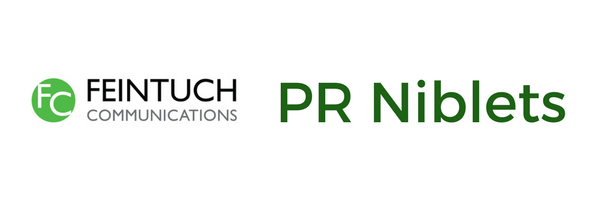What is the biggest change you’ve seen in PR?

Media relations. One thing I remember distinctly about my first jobs was how easy it was to get reporters out of their offices. Trade magazine writers and even mainstream media made time to meet with clients over lunch, which helped to build relationships.Nowadays, no one has time. The economy and the way business is done has effectively changed the way relationships are built. Editorial teams are often short-handed, and any time out of the office is at a premium. In fact, it can be difficult to get an editor you do not have a relationship with on the phone.This has made it all the more important to tighten up the other aspects of media relations. Pitches, both written and verbal, must be very efficient and even more compelling to get the attention of writers and editors.
How do you generate news and build buzz for clients?
Finding and engaging key influencers. For instance, you may want to offer an exclusive story to a major media outlet that your client is most excited about. If an exclusive is not possible, seeding stories to top mainstream or trade media under embargo is a great tool as well. This way, you can prepare them with materials/interviews/etc. to publish their stories when the news hits, not days later. It also lets the writers know that your client believes this is big news and will help you cut through the clutter of all the other news they may cover on a given day.
Social media is also key. By helping a client to build strong social networks (Twitter, Facebook, Linkedin, Pinterest, Instagram, etc.), they can hint at upcoming news that would be of interest to their audiences. By engaging social media influencers in your client’s field (media, industry experts, enthusiasts, etc.), you can build a great deal of anticipation for a pending announcement and extend its reach.
What is the most challenging thing about PR?
Prospecting for new business. This is the life blood of any agency and it can be a challenge to find the time to find new clients. I have found that the proper mindset is to make sure new business prospecting is part of the normal work week, to be tackled alongside regular client work.
I try to make time to consider opportunities for business among colleagues, friends and new contacts. You never know, a well-timed phone call or email can be the first step to gaining a new client.
Is there anything happening in the industry that you find interesting?
 Newsroom and editorial changes. With smaller editorial staff and advertising shifting to online media and other areas, print publications are getting thinner and even transitioning to online-only formats. The editorial landscape is changing rapidly and it is important to keep up to date with changes and new opportunities for more timely coverage.
Newsroom and editorial changes. With smaller editorial staff and advertising shifting to online media and other areas, print publications are getting thinner and even transitioning to online-only formats. The editorial landscape is changing rapidly and it is important to keep up to date with changes and new opportunities for more timely coverage.An upside of a more online-centric media base is its tie to social media. Online stories can be more easily shared with clients’ audiences and other social media influencers to spread key news farther and faster.
What is one thing you wish you’d known when you started out?
Being creative in the job hunt and adapting the job to your preferences. The need for PR is everywhere—in corporations, financial institutions, art organizations, health care companies, non-profits and on and on—so there is a great degree of opportunity to find your passion within the field. As for adapting a current job, I now know you can use your strengths to bring a position even more in line with your interests—and maybe even create a new position. This, of course, needs to fall in line with your employer’s needs and goals.



